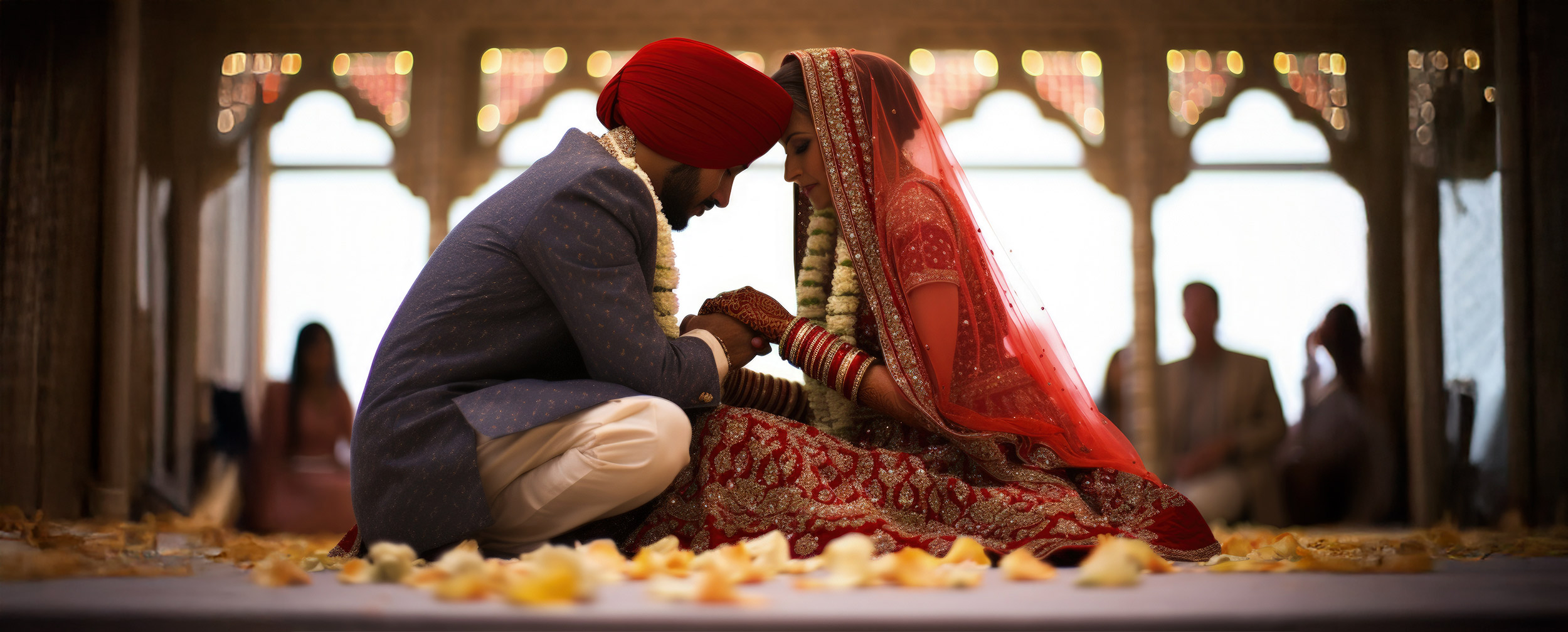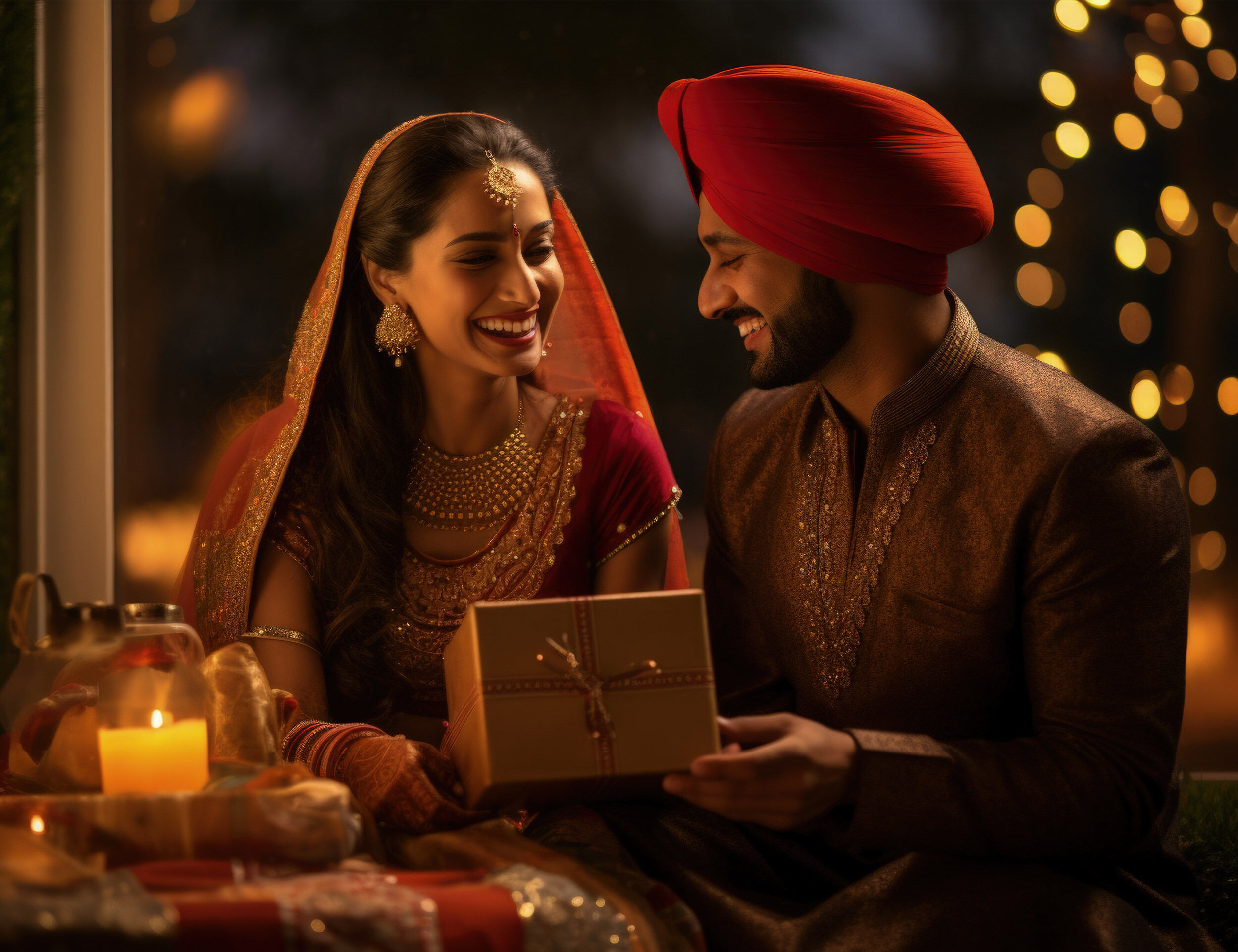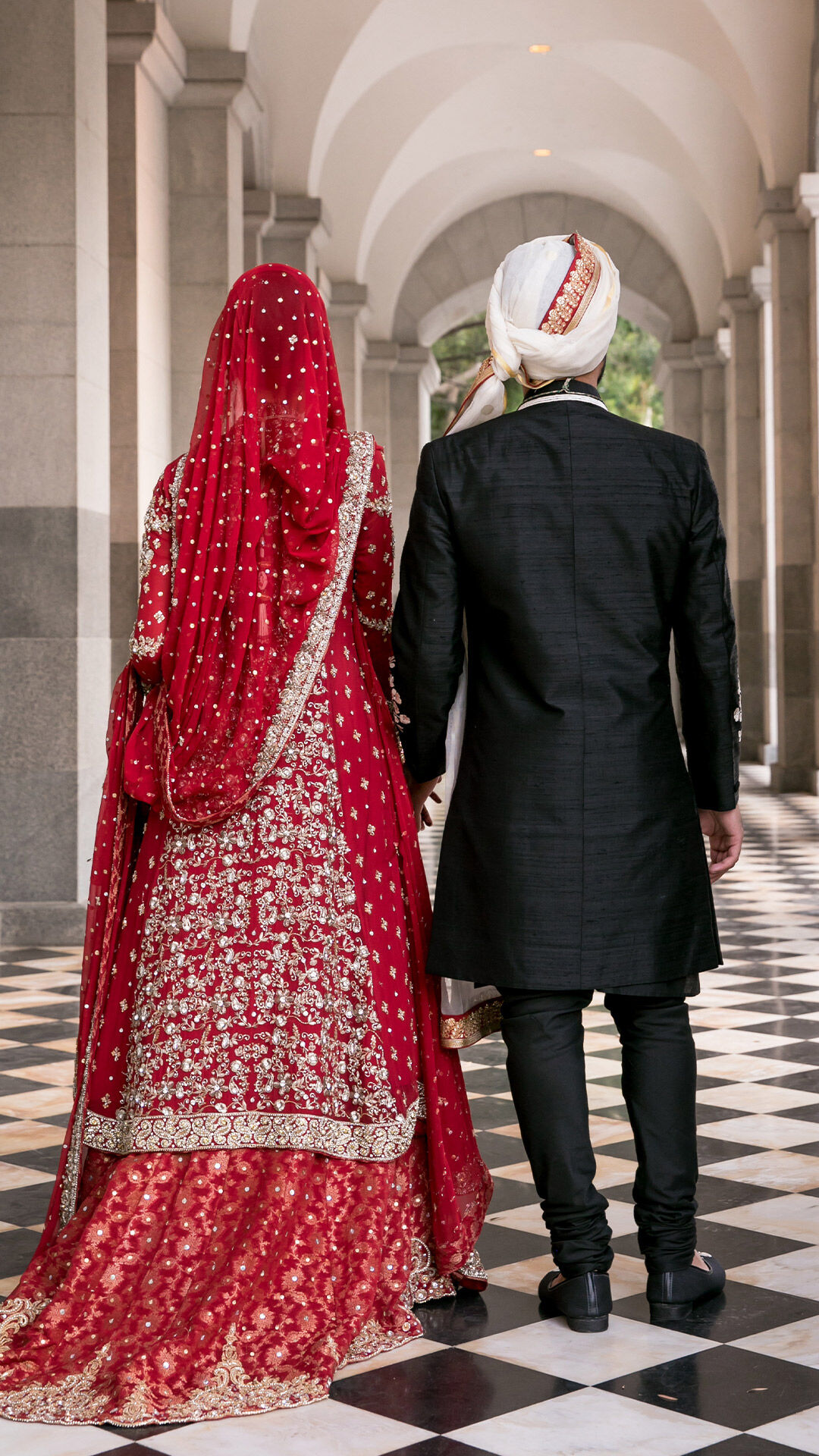STORIES BY MANYAVAR & MOHEY

Lifestyle
A Vivid Cultural Glimpse Into The Punjabi Roka Ceremony Rituals
Date 26 June 2025 Reading time: 7-10 mins
A riot of colour, an air thick with anticipation, the joyous sounds of a dholak – if you've been invited to a Punjabi roka ceremony, prepare for a treat for the senses! This pre-wedding ritual is a pivotal moment that marks the official union of the bride and groom's families. More than just an engagement, the roka ceremony is steeped in age-old traditions that make it a truly special occasion.
As you gear up to attend your first Punjabi roka, here's a detailed look at what you can expect. From the key rituals to the cultural significance, we'll walk you through it all. Get ready to soak in the celebratory spirit!
The Significance of Punjabi Roka Ceremony
In Punjabi culture, the Roka ceremony holds immense significance. Here's why:
The History of Punjabi Roka Ceremony
The word 'roka' translates to 'to stop'. Historically, this ceremony signified that the bride and groom were now officially 'stopped' or 'reserved' for each other. No more potential matches would be considered after this point.
The roka ceremony traditions have evolved into a more elaborate affair over time, but their core significance remains the same. It's a day of new beginnings, of two families becoming one.
The Cultural Importance of the Punjabi Roka Ceremony
In Punjabi culture, a wedding is more than just the union of two individuals – it is the coming together of two families. The Punjabi roka ceremony rituals play a key role in strengthening this bond between the two sides.
This occasion also provides an opportunity for the bride's and groom's extended families to meet and get to know each other before the big day. Amidst the feasting and festivities, new relationships are forged.
What to Expect at a Punjabi Roka Ceremony
As the Roka ceremony approaches, both families bustle with excitement and anticipation. Here's what you can expect:
The Preparations for the Ceremony
The roka ceremony is usually an intimate affair, held at the bride's residence. The planning begins weeks in advance, with the bride's family sending out invitations to close family and friends.
On the day of the ceremony, the house is decked up with flowers and colourful drapes. The dholak, a key instrument in any Punjabi celebration, is often played to set a festive mood.
The Rituals and Traditions
The Punjabi Roka ceremony is steeped in meaningful rituals and traditions. Here are some of the key customs you can expect:
- Tilak Ceremony: The bride's father or a senior family member applies a tilak (a red mark) on the groom's forehead, symbolising respect and acceptance into the family. The groom's family reciprocates by applying tilak on the bride's forehead.
- Gifts and Blessings: Both families exchange gifts as part of Punjabi roka ceremony rituals, usually in the form of clothes, jewellery, and sweets. The elders bless the couple, showering them with their good wishes for a happy and prosperous married life.
- Ring Ceremony: In some Punjabi roka ceremony traditions, the couple exchanges rings as a symbol of their commitment. This modern addition to traditional rituals has gained popularity in recent years.
- Chunni Ceremony: The groom's mother or a female relative places a chunni (a decorative stole) on the bride's head, welcoming her into the family. This gesture signifies the bride's new status as a member of the groom's clan.
The Role of Family and Friends
The beauty of the Punjabi roka ceremony traditions lies in the way it brings families together.
The bride's and groom's parents, siblings, and extended relatives all have roles to play in the rituals.
The bride and groom's siblings, cousins, and friends often take charge of various aspects of the ceremony, from organising the decor to coordinating the entertainment.
The atmosphere at the Roka is one of warmth, love, and camaraderie. Family members and friends come together to celebrate the couple's union and shower them with their blessings. The ceremony provides an opportunity for the two families to bond and create lasting memories.
The Food and Music
No Punjabi celebration is complete without a lavish spread of delectable dishes. The Roka ceremony is no exception. From mouth-watering appetizers like tikkas and samosas to hearty main courses like butter chicken and dal makhani, the menu is a gastronomic delight.
Sweet treats like gulab jamun, jalebi, and laddu are a must-have at any Punjabi wedding function. The aroma of freshly prepared delicacies fills the air, adding to the festive vibe of the occasion.
Music and dance are an integral part of the Roka ceremony. The lively beats of dhol and the energetic moves of bhangra set the stage for a joyous celebration. Family members and friends take to the dance floor, grooving to popular Punjabi tracks and adding to the merriment.
The Impact of Punjabi Roka Ceremony on Modern Weddings
While the Punjabi roka ceremony is rooted in tradition, it has seamlessly adapted to modern times. Today, many couples choose to add their own personal touches to the rituals, making the day truly their own.
However, the essence of the ceremony remains unchanged. It continues to be a beautiful celebration of love, family, and cultural heritage. Attending a roka ceremony is a wonderful way to immerse yourself in the richness of Punjabi wedding traditions.
As you prepare for this joyous occasion, don't forget to dress the part! Manyavar's exquisite collection of kurtas for men, sherwanis, kurta pajamas, and Indo-western outfits for men has everything you need to look your best. For the ladies, explore Mohey's stunning range of lehengas, bridal sarees, bridal lehenga, and Indo-western wear for women that are perfect for a roka ceremony.
Step into the Punjabi roka ceremony with an open heart, ready to embrace the love and laughter. It's an experience you'll cherish for a lifetime!







